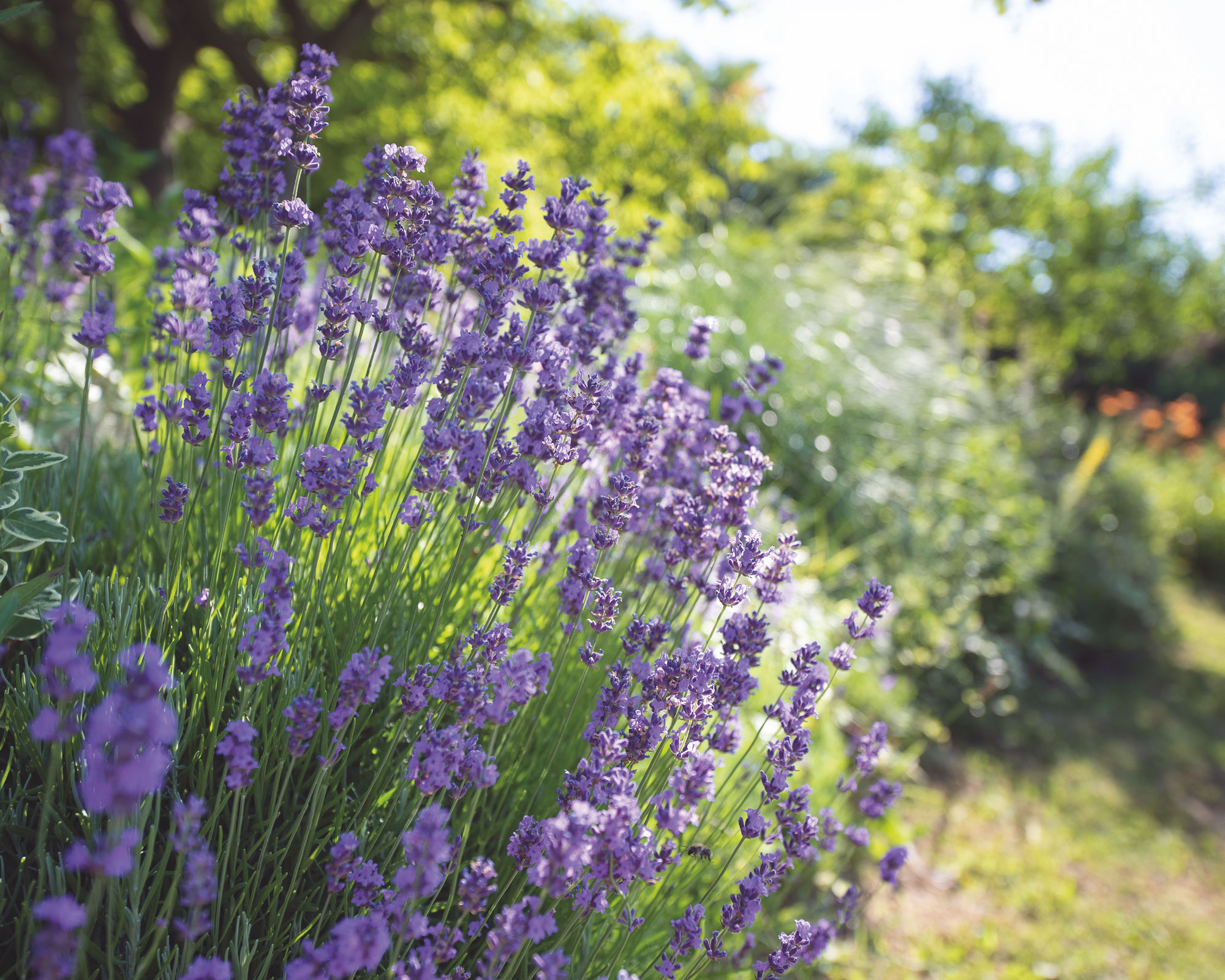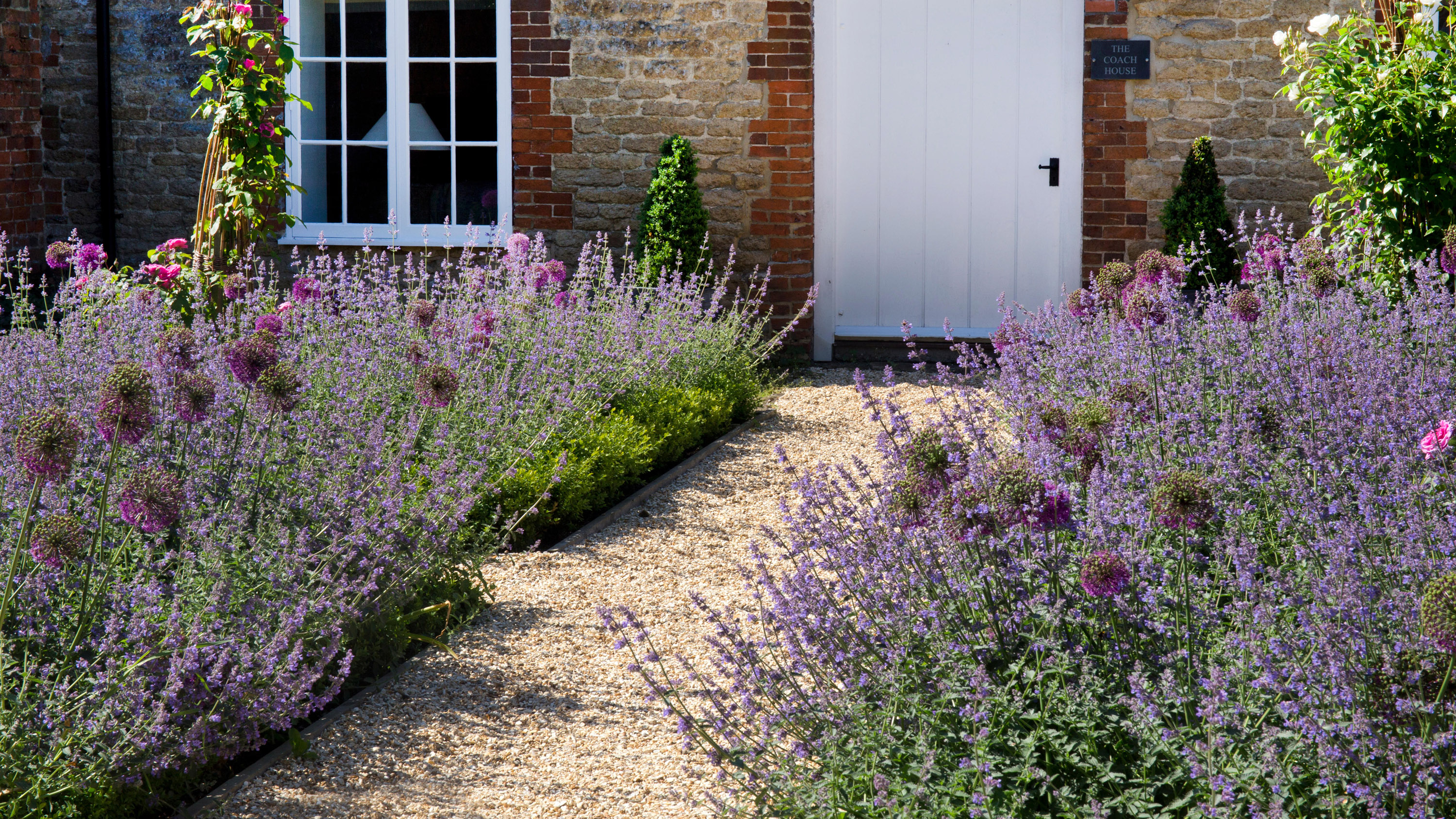
The soil is warming up in the spring, which is the ideal time to plant lavender. While planting lavender in the late fall or winter, when the soil is moister, can raise the chances of root rot, planting lavender in the spring provides the roots time to establish in the warmer, dryer soils.
Depending on your climate, lavenders can still be planted successfully in the summer and into the late fall. You must adhere to a few basic practices to prevent “planting shock” as the lavender adjusts to its new environment if you want to ensure that it survives after planting.
Continue reading to find out when to plant lavenders in warmer and colder locations, as well as these best practices.
Table of Contents
Why Spring is the Best Time to Plant Lavender

After planting, the lavender will benefit since the soil will retain more moisture in the early spring and the sun won’t be as harsh. While it is true that lavender is a drought-resistant plant that grows best in sandy soils with good drainage and full sun, a freshly planted lavender will require hydration.
Once established, lavender plants can tolerate neglect, but newly planted plants need extra care to prevent dehydration because their roots have not yet fully adapted to the soil and are consequently unable to absorb moisture as effectively.
Planting in the spring, when conditions are more favourable, will assist to alleviate some of the consequences of shock because the plant won’t have to deal with the stress of intense sunlight and dry soils while adjusting to its new environment.
By planting in the early spring, the lavender will have two to three months to get used to its new surroundings, increasing its ability to withstand dryness before summer and draw moisture and nutrients from the soil.
Why you Should not Plant Lavender in Winter
Regardless of climate, avoid planting lavender during the cold months. Lavenders have three growing seasons: spring, summer, and fall. In warmer locations, the growing season lasts longer. Lavenders are dormant during the winter.
The lavender will not be able to adapt to their new environment at this period, therefore it is best to leave them where they are (in a container from the garden center, for example). Additionally, because plants were developed to grow in dry soils, lavenders do not fare well in cold, damp soils.
The largest danger when planting lavender is root rot, which is more common in the winter since winter soils have a tendency to hold more moisture and because evaporation is significantly lower at this time of year due to fewer daylight hours and higher amounts of rainfall.
When lavenders are planted in the winter, they frequently sit in the ground without having time to form roots, and frequently the foliage turns brown and the stems droop, giving the plant an unappealing appearance (signs of stress).
Plant lavender during the growing season rather than when it is dormant and unable to adapt to its new environment for the greatest results.
Planting Times of Lavenders in Warm Climates
You can plant lavender later in the season if your area is warmer. The best time to plant lavender is still in the spring, but you’ll have more flexibility when it comes to timing if your area is warmer and has less rain.
Lavender plants, however, are more prone to drying out when planted in the summer. Even though lavender is drought-resistant, it becomes slightly more sensitive in dry conditions after initial planting.
Lavender planting will need diligent watering the first year, but the drying conditions of the summer won’t necessarily prevent it.
Although this depends on other conditions like rainfall and heat intensity, lavender plants grown in the summer need a generous watering immediately after planting and then need to be watered every two to three days for the next three months. Read my article on how often to water lavender for additional details.
In warmer locations with mild winters and no freezing temperatures, planting lavender in the fall is successful.
The benefit of planting lavender in the fall in warm locations is that it can get established before the mild winter without suffering from transplant shock during the time of year when it is most susceptible to the effects of heat.
However, as lavenders in all climes will go dormant over the winter, I would still advise planting the plant as early as possible in the fall to give it time to adapt to its new home.
Best Time to Plant Lavenders in Cold Climates
The best time to plant lavender is in the spring when you are certain that you have seen the last frost of winter in cool temperate locations that see frost in winter (up to USDA zone 5).
Lavenders can be planted from the middle of the summer to the beginning of the fall (about September), but the later you plant, the less time the roots have to grow and the greater the likelihood that the lavender will develop root rot in the chilly, moist soil.
Although it is typical for lavenders of all varieties in all climates to give their best flower display in the second year after planting, I recommend planting lavender in the spring to give the plant time to recover from any “transplant shock” and put it on track to produce a great display of flowers in the summer.
French lavender blooms in the early spring, whereas English lavender typically begins to bloom in June.
The popular types Hidcote or Munstead of English lavender (Lavandula angustifolia), which are the most cold-tolerant forms of lavender that can withstand frosts, should be used when growing lavenders outside in cold locations.
If you plant French and Spanish lavenders in pots that you can bring indoors for winter protection, you can do so in chilly locations.
Planting Lavender and Reducing Transplant Shock
Lavender planting success without major transplant shock depends on three key factors:
- planting at the appropriate season
- the ideal soil mixture
- a suitable watering schedule
The optimum time of year to plant lavenders is in the spring, as was previously mentioned, though they can also be planted in the fall if you live in a warm climate without winter frost.
The ideal soil mixture is crucial. Lavender requires quick-draining soil with low to medium nutrient levels. When you plant lavender, add sand or gravel to the soil to ensure water will drain rapidly and to balance the soil’s fertility so that it is optimal for lavenders. (Read my post for complete directions on how to create the ideal soil mixture for planting lavenders.)
Lavenders are drought-tolerant plants that are acclimated to dry circumstances and don’t need much water once they’re established, so watering them might be challenging. However, it’s crucial to give newly planted lavender enough water until it gets used to its new surroundings.
If lavender is planted in spring or summer, it has to be watered immediately after planting, once every two to three days for the first week, and then every three days for the following three months. After about three to four months, when the plant has started to take root, you can reduce the watering frequency to once every two weeks.
If there has been rain or a number of cloudy days without sunshine, you can forego watering for a few days so that the soil around the lavender plants is not constantly damp, which could cause root rot. When you first plant lavender, the goal with watering is to keep the soil moist rather than wet.
With my comprehensive instructions on preventing transplant shock after planting lavenders, you should be able to make sure that the plant blooms and produces plenty of its distinctive perfume in the first year.
Key Learnings:
- The optimum time to plant lavender is in the spring since this gives the plant time to establish its roots and bloom in the spring and summer.
- Planting lavender successfully is possible in the spring, summer, and fall. Lavender has a longer growing season in warmer climates, giving you more time to plant it before winter. It is recommended to plant lavender early in the spring or summer in colder locations so that it has time to get ready for winter.
- In order for the lavender to adapt to its new position and bloom in the spring and summer, it must be planted at the appropriate time of year, into well-draining low to medium fertility soil, in full sun, and watered carefully throughout the first three months.
FAQ
Where does the best lavender grow?
The Mediterranean region
Will lavender spread by itself?
The only way lavenders may proliferate is through the dispersion of seeds. There are five basic ways that seeds can disperse: by animals, gravity, wind, ballistics, and water. Some plants are serotinous, meaning they only release their seeds in reaction to environmental cues. These plants release their seeds in the late summer from pods that have formed in their spent flower heads. (Even though gardeners may quickly grow them from cuttings.)
Where is the best place to plant a lavender plant?
Total sun
